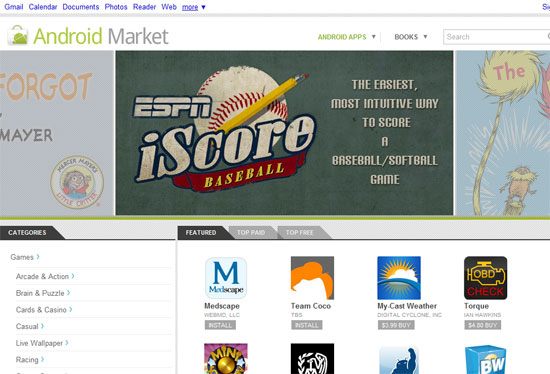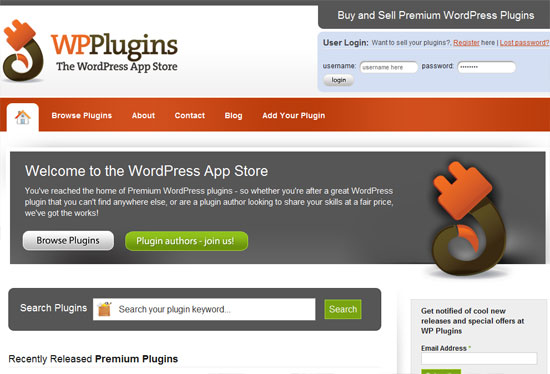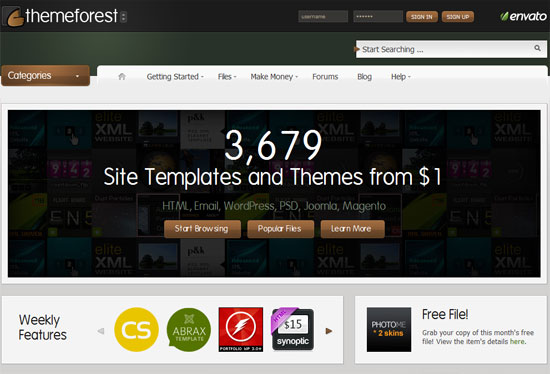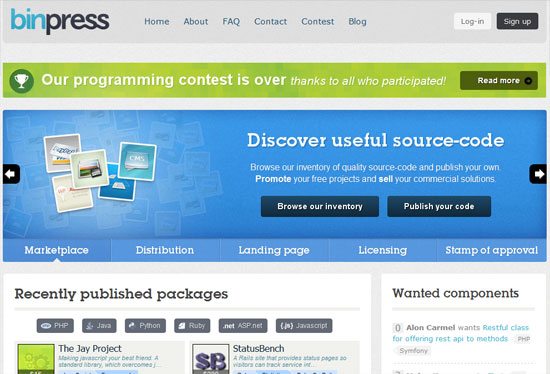
Web development and free and open source software (FOSS) have gone hand in hand since the beginning of the web. Popular scripting languages and web development frameworks such as PHP, Rails and Python are all open source, and many of the most popular platforms built on top of them, like WordPress and Drupal, are too.
Open source has leveled the playing field by reducing the costs of creating software and web services, as well as nurturing innovation and sharing in the web development community.
However, even though the languages and platforms are free — and infrastructure to host them on are getting cheaper and cheaper by the minute thanks to cloud services and affordable hosting solutions like virtual private servers — a booming economy has evolved around the development of products and services for use with open source software.
This economy includes a range of software and services from premium themes for popular open source platforms such as Drupal, Joomla and WordPress to the use of open source web development frameworks like jQuery and Ruby on Rails for creating subscription-based web applications.
Free and commercial open source are symbiotic and complement each other by allowing software products and services to emerge in the marketplace that would not have been possible without open source. Commercial extensions increase the versatility and competitive viability of open source products while also creating a self-sustaining economy.
The Commercial Side of Open Source
Drupal, Joomla and WordPress are three of the top open source CMS platforms and are all built on PHP (also open source). Plenty more lesser-known content management systems exist, and are also viable platforms to build sites on.
WordPress is possibly the most popular one of the bunch. Like its counterparts, the core WordPress package is free and open source, but they also offer premium services to end-users. Drupal core is free and open source, but has premium products and services geared toward enterprises offered through the Acquia network. Selling premium products and services for open source projects is a common strategy for monetizing open source development, especially for such widely used systems.
Some open source products take a different approach by licensing the basic product as free and open source, and then selling premium versions and services of it under a commercial license. One example of this is MySQL, a popular relational database management system that offers a community edition (free) and several enterprise editions under a commercial license. Magento does the same for its open source e-commerce platform, and Alfresco for their enterprise CMS.
A smaller scale example of the free and commercial open source relationship is the creation of commercial plugins and modules for popular open source platforms such as WordPress, Joomla and Drupal. Plugins and modules offer functionality outside of the scope of the core package, empowering end-users by making the systems more versatile while creating an incentive for professional web developers to create better solutions for the community of users.
Commercializing Open Source Development
Making money on open source web development has pros and cons. A very active debate on the programmers’ question and answer site, StackExchange, shows just how varied opinions are on the subject from a developer’s perspective.
By releasing extensions through an existing platform, developers are able to utilize the community’s forums and marketplaces to make their work available to thousands, if not millions, of users.
However, unless you have a marketing team and a solid distribution channel in place, it is an uphill struggle to gain visibility for your product.
Software marketplaces — a portal for selling digital goods — can give you the ability to put your work out there.
Below is a short list of software marketplaces. The list isn’t meant to be comprehensive (because there are a ton of open source marketplaces out there), but rather, it’s just to give you an idea of the viability of commercializing development for open source projects.
Chrome Web Store

Google’s Chrome Web Store offers themes, extensions, and apps for users of the largely open source browser, Google Chrome.
Android Market

The Android Market offers thousands of paid and free apps, all built on the open source Android mobile app platform.
WP Plugins

WP Plugins is a niche software marketplace for WordPress plugins. They offer premium WordPress plugins for extending WordPress with features such as e-commerce capabilities.
ThemeForest

The popular marketplace by Envato with over 600,000 members, ThemeForest is a place where you can find premium themes for WordPress, Drupal, Joomla, and many others.
Binpress

This is a marketplace for source code for languages like PHP and JavaScript.
Joomla Extensions

Joomla has its own extensions directory, some of which have commercial/premium versions.
AgileWebDevelopment

This is a directory for Ruby on Rails plugins; the site currently lists over 1,600 plugins, and that number is growing.
Make a Living on Free and Open Source
Creating products and providing services for open source software is a viable way for web developers to diversify their income channels. If you have reusable code that you use in most of your projects, or have a good idea for a project that fulfills a need not answered by free solutions, then publishing a commercial alternative might give you some relief from the freelance project hunting cycle or that 9-to-5 day job. In many instances, developers can even make a living solely on products and services for free and open source software.
Related Content
- 10 Excellent Open Source and Free Alternatives to Photoshop
- 30 Useful Open Source Apps for Web Designers
- Convincing Your Clients to Use Open Platforms
- Related categories: Web Development and Web Design
About the Author
 Rosston Meyer is a freelance web designer based out of Delray Beach, FL. He has collaborated on interesting projects over the years, including the Ocean Energy Council with family members and with Wizard Sleeve Toys on designer toy production and marketing efforts. You can find his work and social profiles at Rosstamicah New Media Design.
Rosston Meyer is a freelance web designer based out of Delray Beach, FL. He has collaborated on interesting projects over the years, including the Ocean Energy Council with family members and with Wizard Sleeve Toys on designer toy production and marketing efforts. You can find his work and social profiles at Rosstamicah New Media Design.